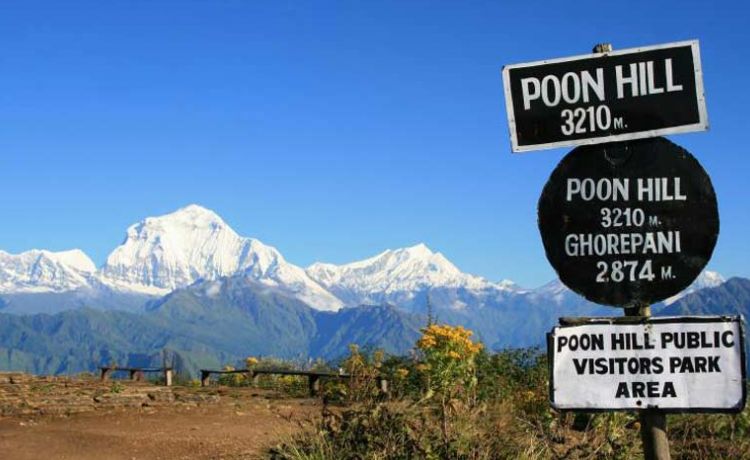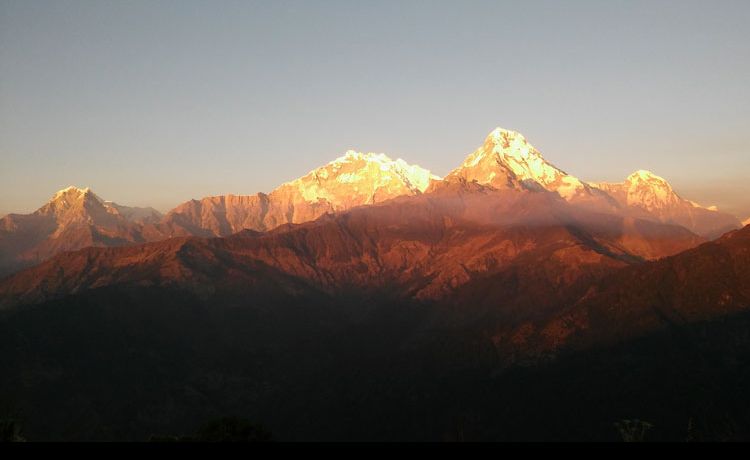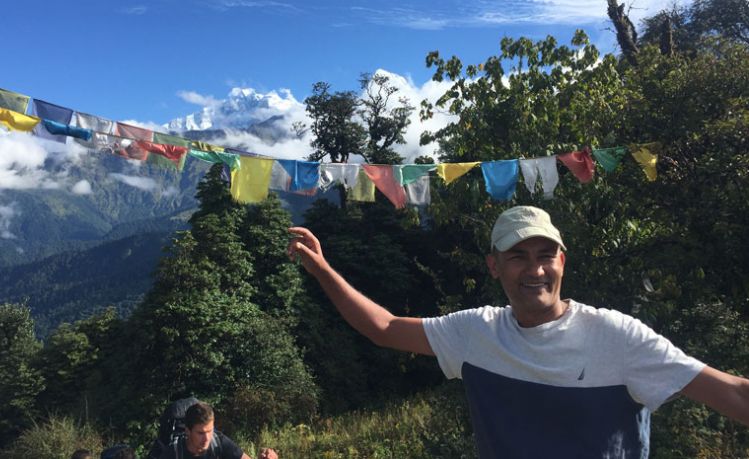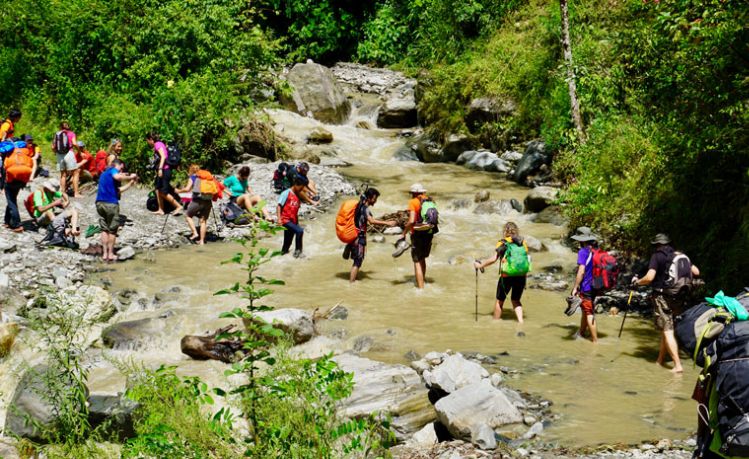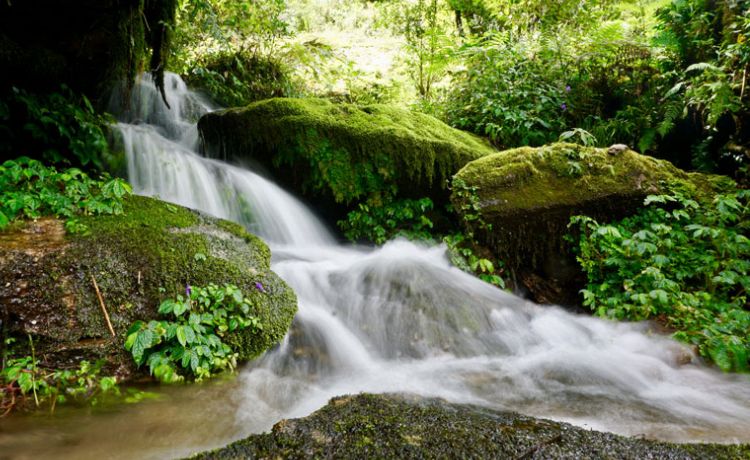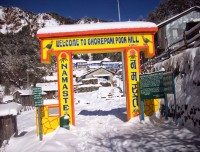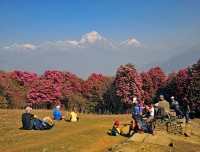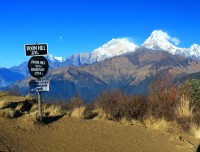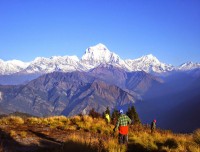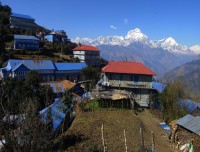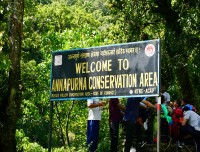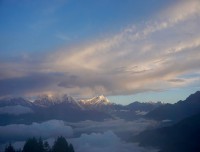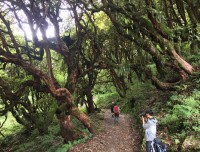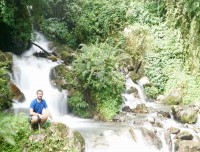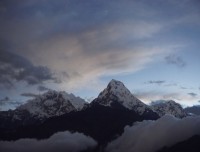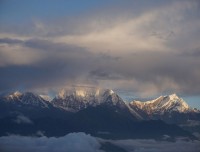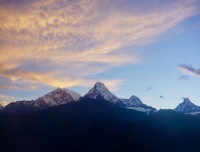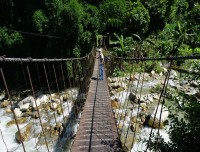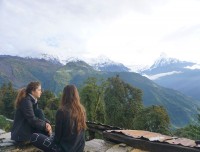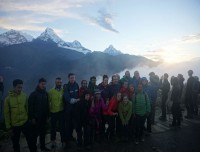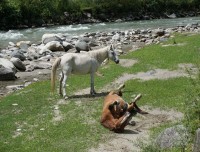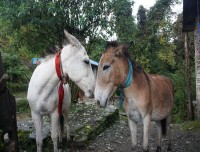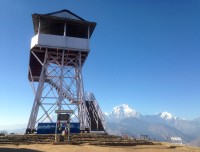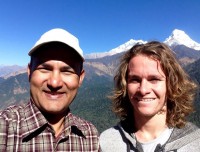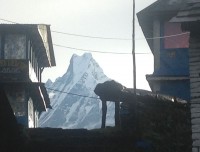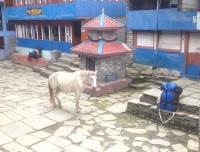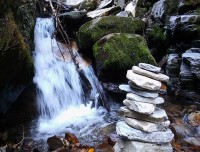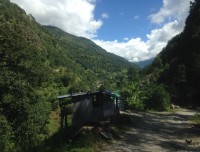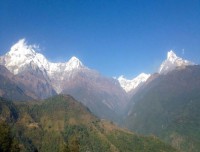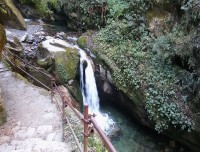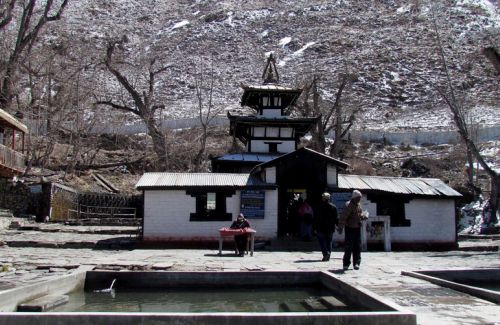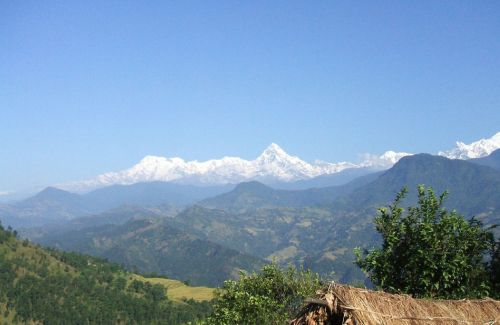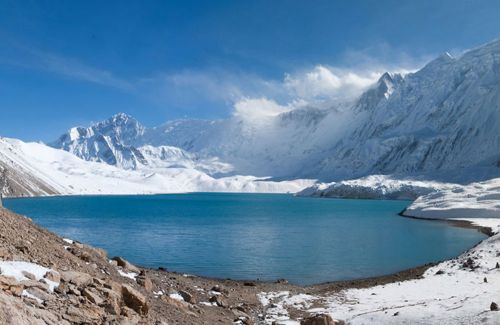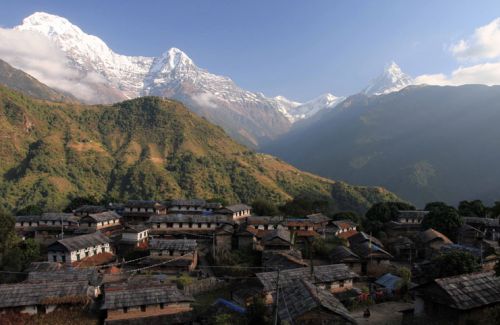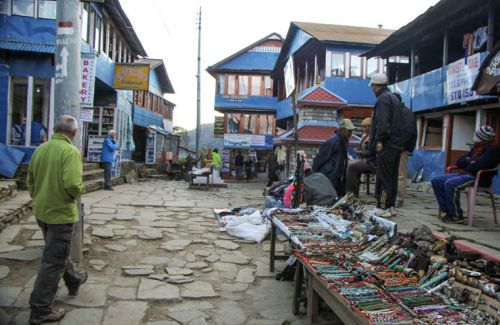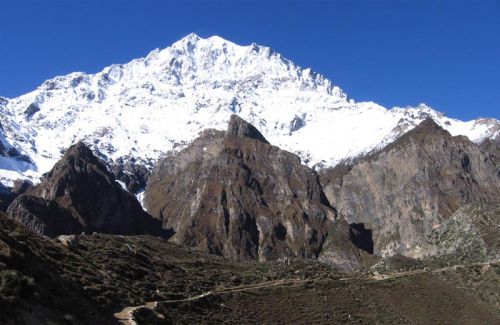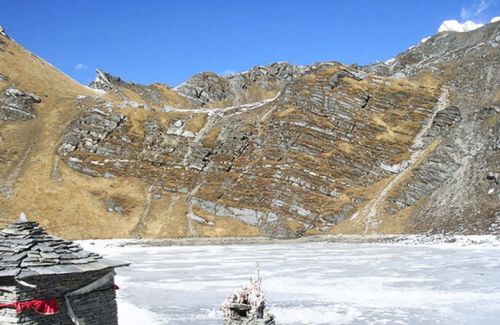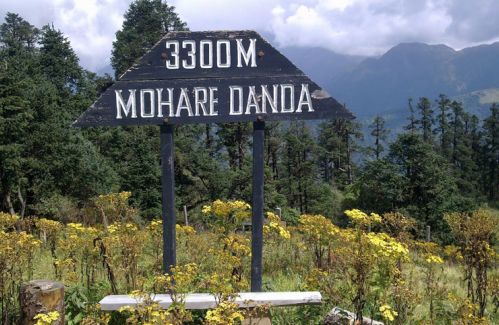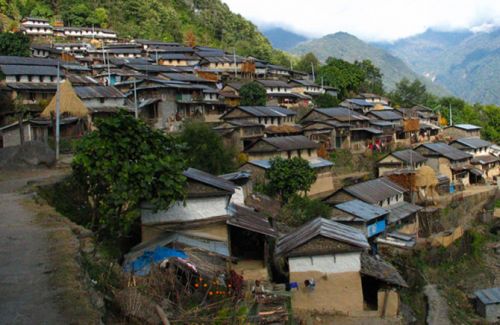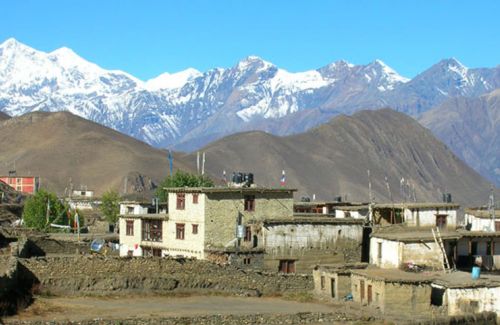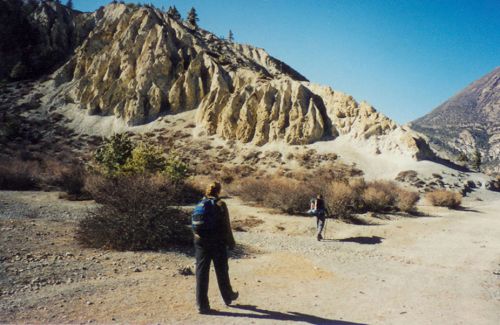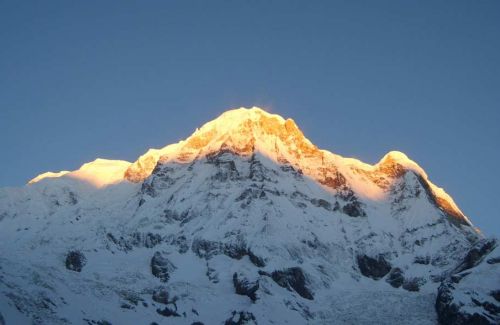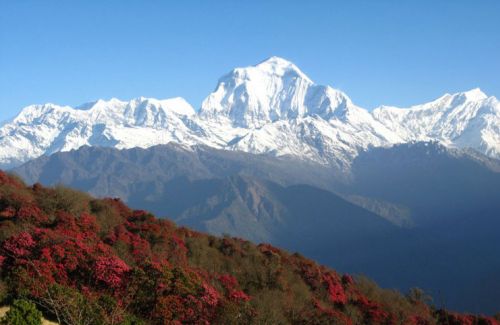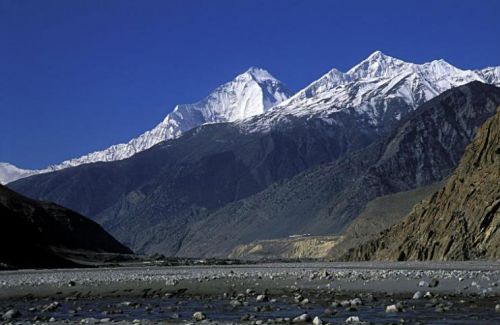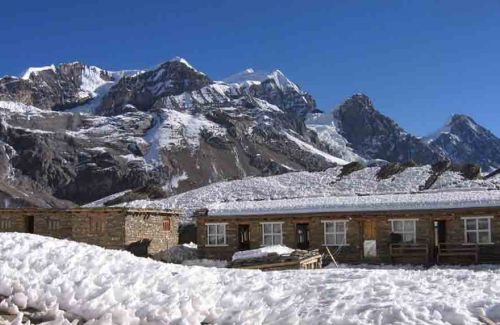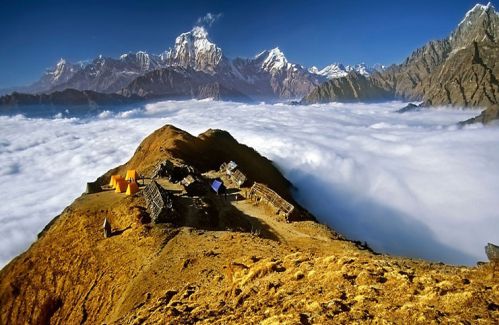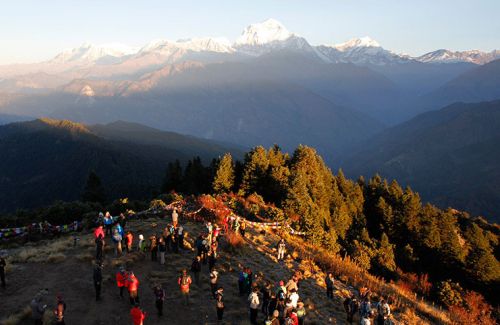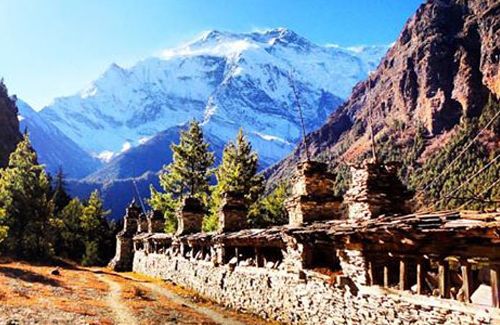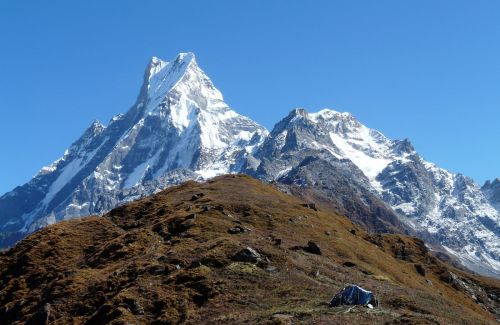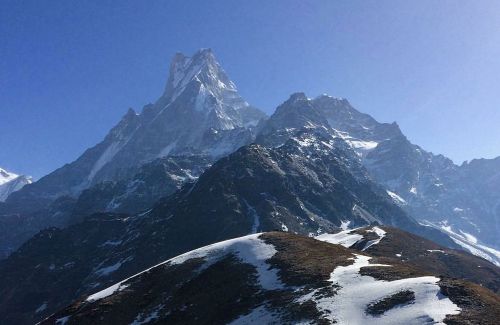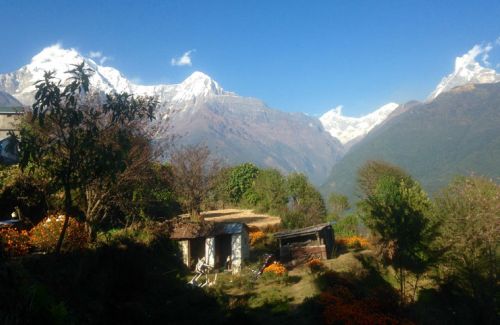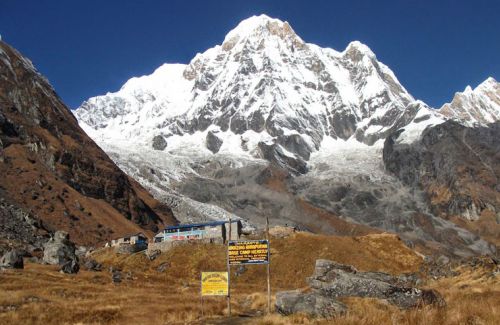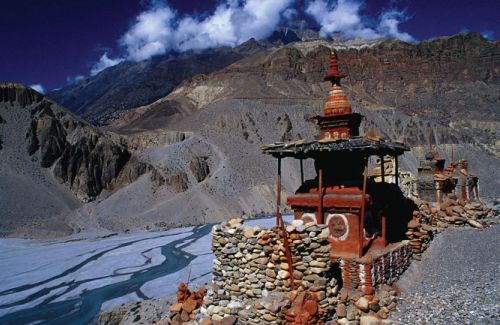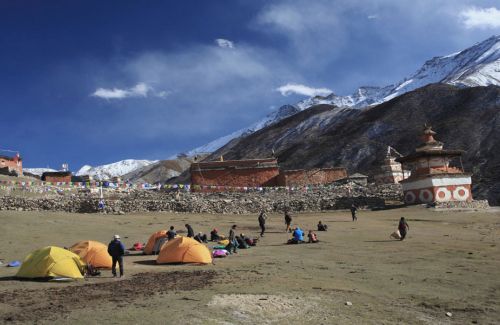Ghorepani Poon Hill Trekking
- Duration10 Days
- Max. Altitude3,210 m.
- Starts FromUSD 750
Destination:Nepal
Trip Grade:Moderate (**)
Meals:Breakfast + Lunch + Dinner
Transportation:Private Vehicle/Tourist Bus
Accommodation:Lodge
Best Season:February to May & September to December
Show AllGhorepani Poonhill trekking is also known as the Annapurna Sunrise trek or the Annapurna Panorama trek. The Ghorepani Poonhill trek is part of the beginning of the Annapurna Circuit trek. It is a short and easy trek of 4-5 days and will take you through villages and ivory colored rhododendron forests. It is a photographer’s paradise! This invigorating trek reveals some of the best views of the Himalayas like Annapurna South (7,219 m), Dhaulagiri (8,167 m), Machhapuchhre (6,997 m) and Himchuli (6,434 m). The route ambles through lush hill country and lovely Gurung villages. During the trek, the path cross a number of streams and waterfalls from the glaciers and snow fields of the peaks high above. Big boulders on the side of the streams adds to the picturesque scene.
The trails in the Ghorepani Poonhill trek are wide and well maintained. The hotel and the lodges offer outstanding service, where you can try local dishes like wild mushroom soup, made from mushrooms collected by the local people from the forest. Sunrises from Poon Hill are gorgeous, and you will be able to see superb views of the Annapurna mountain ranges and Dhaulagiri.
From Poon Hill, we go through the pretty Gurung village of Ghandruk, situated at an altitude of 1,950 m above the sea level. Ghandruk, a touristic village with nearly 300 households, is a success story of community based responsible ecotourism in Nepal. They have maintained tradition and modernity together. The Gurung Museum and The Handicraft Center are well worth visiting there. From Ghandruk, the Annapurna Sanctuary trail heads north, and back to Pokhara.
Ghorepani Poon Hill Trekking is the best selling trek, often chosen by family members because of the easy level of trekking involved. There is no risk of altitude sickness. This trek can be done all through the year except during the monsoon season. This is a perfect route for the beginners or those who have very limited time in Nepal. The best seasons for trekking to Ghorepani/Poon Hill trek are spring (February – April ) and Autumn (September – November).
Himkala Adventure arranges this trek almost every week. We are open to personalizing this trek based on time and interests. It is posible to include on this trek other world Heritage Sites like Chitwan National Park and Kathmandu sightseeing.
Trip Highlights
- Sightseeing in World Heritage Sites
- Scenic drive from Kathmandu to Pokhara
- Great Mountain view of Dhaulagiri and the Kali Gandaki gorge
- Fascinating Pokhara Valley and sightseeing around it
- Spectacular view of Annapurna Massif, Nilgiri, Fishtail and Dhaulagiri from Poon Hill
- Gurung Museum and Handicrafts in Ghandruk
- Slate roofed Gurung village in Ghandruk & their culture
- The most inspiring Gurung culture abd their tradition
Day to Day Itinerary
Day 01:Arrival in Kathmandu (1,350 m) and Transfer to Hotel. Overnight at Hotel
Day 02:Sightseeing around Kathmandu valley and Trek Orientation. O/N at Hotel
Day 03:Drive from Kathmandu to Pokhara (827 m), 7 hrs. O/N at Hotel
Day 04:An hour drive from Pokhara to Birethanti (1,025 m) and trek to Ulleri (2,070 m), 5 hrs. O/N at Guest House
Day 05:Trek from Ulleri to Ghorepani (2,860 m), 7 hrs. O/N at Guest House
Day 06:Hike up to Poon Hill (3,210 m) in the morning, and trek to Tadapani (2,630 m), 4 hrs. O/N at Guest House
Day 07:Trek from Tadapani to Ghandruk(1,940m), 3-4 hrs. O/N at Guest House
Day 08:Trek from Ghandruk to Birethanti (1,025 m), 5 hrs and drive back to Pokhara. O/N at Guest House
Day 09:Drive from Pokhara to Kathmandu, 7 hrs (Can fly if required). O/N at hotel
Day 10:Transfer to International airport
Cost Include
- Airport Picks up and Drops off by private tourist vehicle
- Three nights in Kathmandu and Two nights in Pokhara twin sharing room basis accommodation in hotel (Hotel as per your choice)
- Guided City Tour by private tourist vehicle
- Government Licenced holder guide for city tour
- Lodges, Guest Houses accommodation during the trek
- Full Board meal (Breakfast + Lunch +Dinner) during the trek
- Annapurna Conservation Area Entry permit
- TIMS (Trekker’s Information Management System) Fee
- Experienced English Speaking Trekking Guide
- Local Trekking Porters(2 Trekkers = 1 Porter)
- Food, Salary, Accommodation and Insurance of Guide and Porters
- Drive from Kathmandu - Pokhara - Kathmandu by Tourist Coach
- All Government Taxes, VAT and Service Charges
- Dinner after completion of your trek with Nepalese cultural show
Cost Exclude
- Lunch and Dinner in Kathmandu and in Pokhara
- Entrance Fees in all visiting monuments
- Personal Expenses ( Phone Bills, Bottled or Boiled water, Bar, Laundry, Shower etc.)
- Your Travel Insurance
- Nepal Entry Visa Fee
- Emergency Rescue Evacuation
- Tips to Trekking / Tour Staff, Driver (Tipping is expected)
- Any other expenses that has not been mentioned in the Cost Includes Section
Detail Itinerary
Day 01Arrival in Kathmandu (1,350 m) and Transfer to Hotel. Overnight at HotelWe heartily welcome you to Nepal. Upon your arrival at Tribhuvan International Airport in Kathmandu, our representative from Himkala Adventure waiting you outside, greets you with great reverence and earnestly transfers you to the hotel. Before dinner, you could walk around Thamel or spend time as you wish. Overnight at Kathmandu
Day 02Sightseeing around Kathmandu valley and Trek Orientation. O/N at Hotel After breakfast , we set out for the sightseeing to the UNESCO World Heritage Sites in Kathmandu. We will be visiting the monastery, witness the activities of Lama People, walking around the stupa and the Bajrayana followers with their ritual activities. The old belief and the faith, even superstitions of people can be seen in their daily activities. Magnificently crafted wooden works, intricately carved things, highly designed courtyards and palaces give you the wonderful cultural experience in Nepal. After sightseeing, we come back to hotel then we will brief you about this easy, short and enchanting trekking destination, Ghorepani Poon Hill in Annapurna region of Nepal.
Day 03Drive from Kathmandu to Pokhara (827 m), 7 hrs. O/N at Hotel It is half an hour scenic flight from Kathmandu to Pokhara. The great Himalayan series can be viewed in a clear day smiling with its dazzling beauty. The aerial view of landscape full of greenery, forests and villages are also memorable. Drive from Kathmandu to Pokhara takes 6-7 hours. It is 200 km through numerous bends and twists but the amazing village scene and terraces in the Prithivi Highway. Overnight at Pokhara
Day 04An hour drive from Pokhara to Birethanti (1,025 m) and trek to Ulleri (2,070 m), 5 hrs. O/N at Guest House After breakfast, we drive two hours from Pokhara to Birethanti. There is a regular bus service from Pokhara to Birethanti these days. The road from Pokhara soon reaches Birethanti and turns off to the south. We start to hike following Bhurungi Khola through stone steps to Tikhedhunga. We get lunch there in Tikhedhunga. After being refreshed and drying our sweat, we ascend up about 2 hours to Ulleri. Overnight at Ulleri
Day 05Trek from Ulleri to Ghorepani (2,860 m), 7 hrs. O/N at Guest House After breakfast, we start our trek uphill following the river for half an hour. The trail meets stone steps and through many houses, teashops we keep on climbing until we reach Banthanti (2,300 m). On the way to Banthanti, we enjoy the lovely rhododendron and bamboo forests and Annapurna South can be seen ib between the trees popping out. Following the stream up a narrow valley, with many stone steps, we arrive at Nangathanti (2,520 m). After an hour climb from here finally reaches to Ghorepani. Overnight at Ghorepani
Day 06Hike up to Poon Hill (3,210 m) in the morning, and trek to Tadapani (2,630 m), 4 hrs. O/N at Guest House We get up early in the morning and hike up to the Poon hill. The name ‘Poon Hill’ kept because the hill station was discovered by Late Major Tek Bahadur Poon. It takes about one and half an hour from Ghorepani to the view point, at the top. The place is popular for sunrise view. From here, 10 different mountains can be seen in the clear day. We return back to hotel, take our breakfast and head towards to Tadapani. It is about 6 hour’s trek that covers about 14 km. While trekking down, we catch the mighty Himalayan scenery, passing through the lush green forest. After 3 hours walk we reach to Banthanti, where we take lunch and again walk about 2 hours to our destination to Tadapani. Overnight at Tadapani
Day 07Trek from Tadapani to Ghandruk(1,940m), 3-4 hrs. O/N at Guest House After breakfast at Tadapani, we proceed to walk through oak and rhododendron forest down viewing the great scenery around. This is the charming trek of 4-5 hours in the pleasant atmosphere of nature. After this, we reach to Ghandruk, the village in the slope. The settlement is of stone houses mostly inhabited by Gurung people. The great view of Fishtail,Annapurna South and Huinchuli can be seen from here. The cultural setting of Ghandruk is very influential. We can explore the handicraft center and the Gurung museum. Overnight at Ghandruk
Day 08Trek from Ghandruk to Birethanti (1,025 m), 5 hrs and drive back to Pokhara. O/N at Guest House The trek from Ghandruk is downhill all the way to Birethanti. The walk through the stone staircase continues until Modi Khola River Valley. So, we descend through Kimshe and Syauli Bazaar. From here, the trail goes quite flat till we reach to Birethanti. Form Birethanti, we drive to Pokhara and transfer to the hotel. Overnight at Pokhara
Day 09Drive from Pokhara to Kathmandu, 7 hrs (Can fly if required). O/N at hotel It is 30 minutes flight from Pokhara to Kathmandu. If we would like to go by roadways, then takes 6-7 hours through smooth road viewing terraces and the rural settlement. Overnight at Kathmandu
Day 10Transfer to International airport As per your flight schedule, we transfer you to the Tribhuvan International Airport 3 hours prior to yourWith flight to the next destination.We thank you a lot joining Himkala Adventure for the Ghorepani trek and with warm greeting, our representative departs from the airport. Namaste with palms together!!!
Trip FAQ
The Basics
What physical fitness do I need to book this trip?
Ghorepani Poonhill trekking is fit for the novice trekker and you do not need any prior trekking experience. In addition, the maximum height of this trek is 3210 m, so there is no possibility of altitude sickness. You should feel comfortable hiking 10-20 km per day carrying a day pack of about 5 kg. In addition, plan on doing at least one hour of aerobic activity 3-4 times per week for at least 1 month before your arrival in Nepal. Walking, jogging, cycling, and hiking are some excellent forms of exercise, so long as you are strengthening leg muscles and building stamina. Aerobic conditioning is important primarily because you will be trekking in thinner air, up to 40% less than at sea level. With good aerobic conditioning, you will be able to better metabolize whatever oxygen is available to you.
What is the minimum number of trekkers required for this trip?
There is no minimum. If you are a solo traveler, you are welcome to sign up. We also can arrange group trips to Ghorepani Poonhill.
Our Guides
Who will be guiding me during this trip?
Our guides are trained by the Nepal Academy of Tourism and Hotel Management, certified and approved by the Tourism Department of the Nepal government. The guides hold professional English speaking licenses and we can also provide French, Spanish, Japanese, German and Italian speaking guides by request. Our guides are local Nepali people who have been carefully selected on the basis of their appropriate experience, leadership skills and personality.
What sort of experience do your guides have?
Our trekking guides are experts in Himalayan trekking and have on average over 10 years of trekking experience. Many of them are from neighboring villages and have a lifetime’s worth of knowledge about the routes and precautions to take. In addition to having their guide certification, all our guides have a hold at least a Master’s Degree and have excellent command of the English language. They are also trained in first aid.
Transportation and Accommodation
How do I find Himkala Adventure for the airport pick up?
Our representative from Himkala Adventure will display a small placard of company or your name outside the airport terminal. You will be driven to the hotel by our tourist vehicle.
What mode of transportation do I use?
We will provide private transportation for Airport/Hotel pick up and drop off and sightseeing in Kathmandu Valley.
What is the baggage allowance from/to Kathmandu – Pokhara flight?
We also offer trekkers the option to fly from Kathmandu to Pokhara. It is scenic flight over the mountains which takes 25 minutes. Different airlines have different restrictions but in general, passengers are allowed to carry 20 kg of check-in luggage.
What sort of accommodation do I get in Kathmandu and Pokhara?
We provide standard rooms with twin sharing accommodations at three star hotels in Kathmandu including breakfast. Accommodation can be upgraded by request. Some of our packages are sold without accommodation as well.
What sort of accommodation do I get in trekking?
Guesthouses/Teahouses/Lodges provide twin sharing single and double rooms and occasionally a dormitory. These come with clean mattresses and a quilt or blanket. Our company provides sleeping bags if needed but we always recommend having your own sleeping equipment. You will be sharing the room with your other trekkers. The toilet is always outside the room with basic facilities.
What are Teahouses?
Teahouses offer a unique mountain trekking experience in which lodging and meals are offered. Teahouses are simple but neat and clean and provide fresh and hygienic food in a friendly local atmosphere. Most have running water, with many of them having hot water for bathing.
What sort of food, water and drinks can I expect in trekking?
You will have your breakfast and dinner at the lodges where you will be staying and lunch during the trek. The food in the Himalayas is very simple but hygienic, fresh, and delicious. Most meals are vegetarian. Meals are prepared by locals who have years of experience providing food to trekkers on this route. You will have the chance to enjoy different varieties of delicious Nepali dishes! The most popular Nepali food is daal bhat (rice and lentils) with some mixed vegetable curry. Garlic soup is popular as it helps you with acclimatization. We recommend you to drink mineral water or boiled water with water purification pills or drops. You can also find other drinks like hot chocolate, coffee, tea, hot lemon water with honey, ginger tea, and soft drinks.
Preparation
What is the best season for this trekking?
The best season for Ghorepani Poonhill trekking is spring (March to May) and autumn (September to December). These are the perfect time of the year for the breathtaking views of Himalayas.
What is the weather and temperature like during the trekking?
The climate in Nepal varies from place to place which can be categorized in different four main seasons. The main seasons in Nepal are spring (March to May), summer (June to August), autumn (September to November) & winter (December to February). The best season to travel in Nepal is autumn (September, October & November) & spring (March, April & May). Weather in the mountains is unpredictable, but the day temperature in Ghorepani Poonhill trekk is comfortable.
What type of shoes should I wear during Ghorepani Poonhill trekking?
We recommend hiking boots made of strong but light material with extra laces. It is best to buy shoes and boots before arriving in Nepal. We advise you to wear your new shoes for sometime before the trek to break them in.
Do I need to have insurance for this trip?
We request you to have a travel-insurance policy to cover theft, loss, medical problems, and emergency helicopter evacuation from high altitudes before coming to Nepal. Please make sure your travel insurance policy includes mountaineering or alpinism, as well as international medical evacuation insurance to cover an emergency helicopter evacuation or a charted flight from the remote mountain trails. Without insurance, a helicopter evacuation might cost $2500-$10000 USD depending on the location.
During the Trek
May I charge my electronic gadgets during Ghorepani Poonhill trek?
Most teahouses have charging facilities. You can charge your devices by paying some extra money. It’s recommended to bring a travel adapter and to put your gadgets in a warm place at night.
How much additional money is required for this trip?
In Kathmandu you can allocate about 10-15 USD per person per meal. During the trek, 10-15 USD 10 to USD per person per day will be sufficient to buy bottled water, chocolates, and hot showers during the trek.
Are there communication or internet services during Ghorepani Poonhill trek?
All guesthouses/lodges along the Ghorepani Poonhill trail have telephones and internet services. They provide WIFI service for an extra charge. All our guides carry a local mobile phone. You can use his mobile phone to make any local or international call from trekking trails by paying him directly. We highly recommend having a local SIM card for call and internet services during trekking. Local SIM cards are easily available in many stores and at the airport as well. You will need to provide a passport photo and a copy of you passport to get a local SIM card from NCELL or NTC, the only 2 mobile providers in Nepal.
Can I use credit cards in the Ghorepani Poonhill trek?
No, you can only use credit cards in cities like Kathmandu. It is better to exchange money in Kathmandu before you go to the mountains. Outside of the cities, it is best to have cash, and in small notes.
May I get a chance to shower during the Ghorepani Poonhill trek?
Showers will be provided in the form of buckets of water. Most of the guesthouse provide hot water at an extra cost.
May I add extra days in trekking?
If you have more days to spare, you could easily extend your trek with some side trips to nearby Kaligandaki, Jomsom, Mauktinath, Mustang, or for the shorter trip to Hot Spring, Mini Annapurna Circuit and so on. If you would like to customize or shorten your trip, it is possible as well.
What happens in case of emergency?
Himkala Adventure is prepared for any emergency situation. Our guides are trained in first aid and can deal with most of the basic ailments that occur during the trek. Every client should have his own insurance before coming to Nepal in case of emergency.
Do I need to tip my guide and porter? How much would that be?
Tipping is not mandatory but it is a greatly appreciated way of showing gratitude after you have completed this trek. We recommend you to tip a minimum 10% of your total trip cost for tipping the local staff. The ratio of tipping breakdown between the guide and porter will be given to you at the pre-trip meeting in Kathmandu before starting the trek.
What is the social and environmental responsibility of Himkala Adventure for this trip?
The environmental situation in Nepal is threatened by global warming, human activities, and the adverse effects of natural incidents. With the ozone layer depleting, the atmosphere is getting heated and the snow in the Himalayas is melting day by day, causing sea level to rise. Population growth is causing deforestation and soil erosion in Nepal. Himkala Adventure is concerned with the social and environmental implications of trekking. We are very conscious of not littering in the open spaces and manage garbage properly. We are working together with other companies and the local people in taking these issues seriously.
Trip Note
Cost:
The cost of trip will vary according to the number of travelers in the group, the quality of the hotel requested, and the mode of transportation. Please contact us with further details about your trip to get a quote of the exact price.
Walking Trails:
There are stone steps up and downhill in most of the trekking routes in the Annapurna Region. Trekking poles may be useful.
Weather:
The main trekking season in Nepal is from October to December and March to May. The day temperature for walking to Ghorepani Poonhill is comfortable. The sky is clear, with occasional rainfall and snow in the wintertime. Temperatures start at about 10 degrees centigrade at a height of 3,600 m and will drop the higher we trek.
Nepal Strikes:
There may be Bandha (Nepal transportation strikes) at a very short notice. However, the shuttle bus in operation by the Nepal Tourism Board and the Nepal Tourist Police does not participate in these strikes and you can travel from the domestic and international terminals to various hotels in Kathmandu for 300 rupees per person.
Itinerary Disclaimer:
Please note that some changes may occur in our itineraries due to bad weather and common seasonal changes in timetables and transport routes.
Physical Fitness Readiness:
Ghorepani Poonhill trekking is very easy trekking that can be done by all ages. This is the best selling scenic trek and. Because the highest point of this trek is 3210 m above the sea level, there is no risk of altitude sickness. We advise you to undergo regular excercise to prepare for this trek.
Group Size:
Himkala Adventure organizes treks for solo and group travelers. Group travelers will share accommodation, separated by gender. Solo travelers will get a single accommodation, and are subject to a supplement charge.
Accommodation and Meals:
Accommodations at local lodges are simple but clean and comfortable. Toilets and washing facilities are shared and rudimentary. The food is simple but nourishing. In high altitude regions, there are very few tea houses with electricity or hot water. Hot showers are available by request for an added fee.
Money Matters:
Please note that most establishments and banks in Nepal will not accept foreign currency notes that are old, torn or faded. Please ensure that you have crisp, clean notes.
The official currency of Nepal is the Nepali Rupee (NPR). ATMs can be found only in major cities of Nepal like Kathmandu, Pokhara, Chitwan, Bhaktapur etc. The government of Nepal has banned the import, export and use of 500 and 1000 Indian rupee notes in Nepal. Make sure to avoid carrying these notes when traveling into Nepal, otherwise they may be confiscated and you may be fined.
While travelers cheques have the advantage of security, exchanging them can be a lengthy process, commissions can be high (up to 10%) and they can be difficult to change in rural areas, on weekends and public holidays. If you choose to bring travelers’ cheques, make sure they are a major brand and major currency.
Tipping:
Tipping is not mandatory and is entirely a personal preference. Himkala Adventure recommends you tip separate members of the trekking staff instead of giving all your tips to the trekking staff group leader. Please do not tip with coins or dirty and ripped notes. This is culturally taken as an insult.
Local Dress in Nepal:
Nudity is a sensitive issue in Nepal. Women should avoid wearing shorts and sleeveless tops in public places where this might be seen as inappropriate. Remove shoes before entering certain holy places. Non-Hindus are not permitted in some temples.
Feedback:
Your feedback is welcomed and we are always eager to hear suggestions from you.
Trip Info
- Health and Fitness
- Himkala Crews
- Hypothermia
- Safety and Security
- Travel Insurance and Evacuation
- Trip FAQs
- Washing and Shower
- Water/Food and Nutrition
- Trip Grading
- Weather
- Accommodation/Shelter
- Altitude Sickness
- Communications and Updates
- Conservation
- Cross Cultural Issues
- Essential Do’s and Don’ts
- Foot Ware/Foot Care
- Equipment List
What our clients say?
.jpg)
I had always in my mind to go to Nepal and do some of the trekking. With Himkala Adventure, I did Ghorepani Poonhill Trekking and I lived my dream! I…...
Julian Lloris Ramos, Spain
Read More